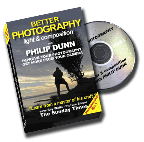There’s more to photographing a sunset than just capturing the colour. So how do you can inject more visual appeal, drama and romance into your pictures?
Sunsets have always attracted photographers and artists, and so they should. But there’s more to capturing a great sunset photograph than just pointing a camera at a colourful sky. It is unlikely that you will need to improve on the colour of a really good sunset, either with filters or in Photoshop, but if you want to capture the romance and spectacle of the moment, you simply must resort to sound composition and good camera craft.
Strangely, it is rarely the glory of the sky alone that rivets the viewer or stirs the imagination in a successful sunset picture. It is more likely to be the inclusion of a foreground: people, landscape or other objects that the sunset is actually lighting or silhouetting. It will be the whole scene that will tell of the romance or drama, not just the sky. In an exotic location, a picture of the setting sun can express the thrill of travel like few other subjects. However, the most common mistake leading to boring pictures is to get so dazzled by the splendour of the scene that you cease to look at it objectively – you must bear in mind the way the camera will record it.
TOP PICTURE: an interesting foreground has been included in the picture of the lighthouse. There is no detail in the silhouettes of the rocks – just outline shape, that’s fine. The eye is moves over them and across the bay to the island and the sky, taking in detail as it goes. The pictures has much more to say about the subject and is far more rewarding to look at. Notice how that colour has been reflected right into the foregound
 SECOND PICTURE: Yawwwwn… okay, nice colours. But where is the real visual impact? The only thing that can be said about this is that it is correctly exposed and the lighthouse has been placed on one of the vertical lines of our Rule of Thirds. The picture has no depth. Bin it!
SECOND PICTURE: Yawwwwn… okay, nice colours. But where is the real visual impact? The only thing that can be said about this is that it is correctly exposed and the lighthouse has been placed on one of the vertical lines of our Rule of Thirds. The picture has no depth. Bin it!
Sunsets have always attracted photographers and artists, and so they should. But there’s more to capturing a great sunset photograph than just pointing a camera at a colourful sky. It is unlikely that you will need to improve on the colour of a really good sunset, either with filters or in Photoshop, but if you want to capture the romance and spectacle of the moment, you simply must resort to sound composition and good camera craft.
Strangely, it is rarely the glory of the sky alone that rivets the viewer or stirs the imagination in a successful sunset picture. It is more likely to be the inclusion of a foreground: people, landscape or other objects that the sunset is actually lighting or silhouetting. It will be the whole scene that will tell of the romance or drama, not just the sky. In an exotic location, a picture of the setting sun can express the thrill of travel like few other subjects. However, the most common mistake leading to boring pictures is to get so dazzled by the splendour of the scene that you cease to look at it objectively – you must bear in mind the way the camera will record it.
TOP PICTURE: an interesting foreground has been included in the picture of the lighthouse. There is no detail in the silhouettes of the rocks – just outline shape, that’s fine. The eye is moves over them and across the bay to the island and the sky, taking in detail as it goes. The pictures has much more to say about the subject and is far more rewarding to look at. Notice how that colour has been reflected right into the foregound
 SECOND PICTURE: Yawwwwn… okay, nice colours. But where is the real visual impact? The only thing that can be said about this is that it is correctly exposed and the lighthouse has been placed on one of the vertical lines of our Rule of Thirds. The picture has no depth. Bin it!
SECOND PICTURE: Yawwwwn… okay, nice colours. But where is the real visual impact? The only thing that can be said about this is that it is correctly exposed and the lighthouse has been placed on one of the vertical lines of our Rule of Thirds. The picture has no depth. Bin it!BOTTOM PICTURE: A wide angle lens has been used to include lots of interesting foreground details. Notice how the reflected colour of the setting sun has been brought right into the foreground adding more value to the whole image. The camera
 was put on a tripod and a shutter speed 1/30sec was used at f11. The exposure was taken from the foreground. The small aperture has helped created a nice sparkle flare around the sun
was put on a tripod and a shutter speed 1/30sec was used at f11. The exposure was taken from the foreground. The small aperture has helped created a nice sparkle flare around the sunNEXT in part 2 - Photographing people at sunset



No comments:
Post a Comment